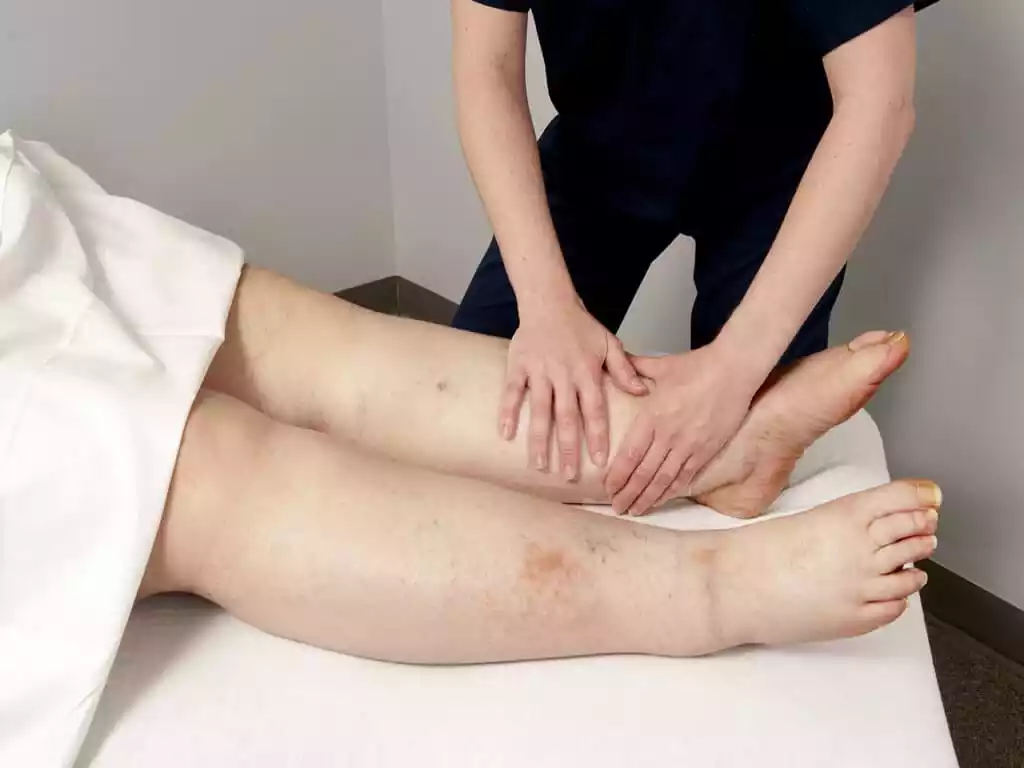Introduction
Lymphoma and lymphedema, while sounding similar, refer to two distinct medical conditions related to the lymphatic system. Lymphoma is a type of cancer, whereas lymphedema is a condition characterized by swelling due to the build-up of lymph fluid. Both impact the body’s lymphatic system, but they originate from different causes and have unique presentations and management. This article delves into the intricacies of both conditions, highlighting the differences, connections, and recent advancements in their research and treatment.
Definition of Lymphoma
Lymphoma is a type of cancer that originates in the lymphatic system, specifically in the lymphocytes, which are a type of white blood cell. The lymphatic system is a part of the body’s immune system and helps in filtering out harmful substances and fighting infections. Lymphoma can occur in any part of the lymphatic system, including the lymph nodes, spleen, thymus, bone marrow, and other organs.

There are several types of lymphoma, but the two main categories are Hodgkin lymphoma (HL) and Non-Hodgkin lymphoma (NHL). The distinction between these two main types is based on specific cellular characteristics seen under a microscope.
Definition of Lymphedema
Lymphedema is a chronic condition characterized by the accumulation of lymph fluid, leading to swelling (edema) in specific parts of the body, typically in the arms or legs. It results from a compromised or damaged lymphatic system, which can no longer effectively transport lymph fluid back to the bloodstream. This impaired drainage can be due to various causes, including the surgical removal of lymph nodes, radiation therapy, infections, or other injuries to the lymphatic vessels.

There are two main types of lymphedema:
- Primary Lymphedema: A rare, inherited condition that arises from abnormalities in the lymphatic system’s development.
- Secondary Lymphedema: More common and results from external factors that damage the lymphatic system. For example, surgical procedures for cancer treatments, infections, or trauma can lead to secondary lymphedema.
If not managed appropriately, lymphedema can lead to complications like infections, fibrosis (hardening of tissues), and decreased functionality of the affected limb.
Causes and Risk Factors
Lymphoma: Lymphoma arises from the malignant transformation of lymphocytes, a type of white blood cell. The exact cause remains unknown, but several risk factors increase the likelihood:
- Genetic predisposition
- Immune system diseases
- Viral infections like Epstein-Barr
- Prolonged exposure to toxic chemicals
- Organ transplant or autoimmune disease treatments, which weaken the immune system.
Lymphedema: Lymphedema is a result of impaired lymphatic drainage. Causes and risk factors include:
- Surgical removal of or injury to lymph nodes (common after cancer surgery)
- Radiation therapy to lymph node areas
- Infections or parasites that damage the lymphatic system
- Inherited conditions (primary lymphedema)
- Cancerous blockage of the lymphatic system.
Symptoms and Diagnosis
Lymphoma:
- Swollen lymph nodes
- Fatigue
- Fever and night sweats
- Weight loss
- Itchy skin Diagnosis: Blood tests, biopsies, imaging studies, bone marrow examination.
Lymphedema:
- Swelling of limbs
- A heavy or tight feeling
- Restricted range of motion
- Repeated infections
- Scarring Diagnosis: Medical history, physical examination, imaging tests like MRI, CT, or Doppler ultrasound.
Comparison Table of Lymphoma and Lymphedema
There are the comparison table of Lymphoma and Lymphedema:
| Feature | Lymphoma | Lymphedema |
|---|---|---|
| Nature | Cancer of lymphatic cells | Chronic swelling due to lymph fluid accumulation |
| Primary Cause | Malignant transformation of lymphocytes | Impaired lymph drainage or damage to lymph vessels |
| Key Symptoms | – Swollen lymph nodes
– Fatigue – Fever and night sweats – Weight loss |
– Limb swelling (usually arm or leg)
– A heavy or tight feeling – Hardening and thickening of the skin (fibrosis) – Decreased flexibility in affected limb |
| Diagnosis | – Blood tests
– Biopsies – Imaging studies |
– Medical history
– Physical examination – Imaging tests (MRI, CT, Doppler ultrasound) |
| Treatment | – Chemotherapy
– Radiation therapy – Immunotherapy – Stem cell or bone marrow transplant |
– Compression garments
– Manual lymphatic drainage – Pneumatic compression – Physical therapy |
| Risk Factors | – Genetic factors
– Immune system diseases – Certain infections (e.g., Epstein-Barr virus) – Exposure to certain chemicals |
– Surgery removing lymph nodes
– Radiation therapy – Infections that damage lymph vessels – Cancer or tumors blocking lymphatic system |
| Prognosis | Varies based on type and stage of lymphoma, treatment success, and other factors | Chronic condition; can be managed but often not cured |
This table provides a succinct overview of the differences between lymphoma and lymphedema. Both conditions are complex and can manifest differently based on individual circumstances.
How are Lymphoma and Lymphedema Connected?
Lymphoma and lymphedema are intrinsically linked through their association with the lymphatic system, but they have distinctly different pathologies. Their connection goes beyond just the system they affect; the treatment of lymphoma can directly lead to the development of lymphedema in some patients.
Here’s how they’re connected:
- Treatment-Related Lymphedema: One of the most common connections between lymphoma and lymphedema is the development of the latter as a side effect of cancer treatment.
- Surgical Intervention: Patients with lymphoma may undergo surgery to remove affected lymph nodes or entire lymph node chains. This can disrupt the natural flow of the lymphatic fluid in the area, leading to pooling and eventually lymphedema.
- Radiation Therapy: Radiation is another common treatment for lymphoma. While it targets and kills cancer cells, it can also damage healthy cells, including those of the lymphatic system. Over time, this damage can reduce the system’s efficacy in draining lymph fluid, thus leading to lymphedema.
- Lymphatic System Obstruction: In some cases, the lymphoma itself can lead to lymphedema. As the cancerous lymphatic cells proliferate, they can block the lymph vessels, impeding the proper drainage of lymph fluid.
- Awareness and Monitoring: Because of the recognized risk of lymphedema in lymphoma patients, there’s an emphasis on awareness and early detection. Patients are often educated about the signs and symptoms of lymphedema and are closely monitored during and after their cancer treatment.
- Shared Risk Factors: Some risk factors, such as certain infections, can increase the risk of both lymphoma and secondary lymphedema. For instance, filariasis, a parasitic infection, can lead to lymphedema and has also been associated with a specific type of lymphoma.
Treatment Options for Lymphoma and Lymphedema
Lymphoma:
- Chemotherapy
- Radiation therapy
- Immunotherapy
- Bone marrow transplant
Lymphedema:
- Compression garments
- Manual lymphatic drainage
- Pneumatic compression
- Surgical procedures
- Physical exercises
Preventing and Living with Lymphedema after Lymphoma
Managing the risk of lymphedema after lymphoma treatment is crucial for maintaining a good quality of life.

Here’s a brief guide on prevention and living with lymphedema post-lymphoma:
Preventing Lymphedema:
- Early Detection: Monitor for signs of swelling regularly. Catching lymphedema early can help manage it more effectively.
- Protect Your Skin: Avoid cuts, burns, or insect bites on the at-risk limb to reduce the chance of infection.
- Avoid Blood Draws and IVs: If possible, avoid having blood drawn or IVs placed in the arm on the side where lymph nodes were removed.
- Limit Heat Exposure: Avoid applying direct heat, like hot packs, to the affected area.
- Exercise with Care: Begin any new exercise regimen gradually, and avoid straining the at-risk limb. Gentle exercises can help promote lymphatic drainage.
Living with Lymphedema:
- Compression Garments: Wear fitted compression sleeves or stockings to help move fluid out of the affected limb.
- Elevation: Elevate the swollen limb above the heart level whenever possible to promote fluid drainage.
- Skin Care: Keep skin moisturized and clean to prevent cracking and infections.
- Manual Lymph Drainage (MLD): This specialized form of massage can help move lymph fluid out of the swollen area.
- Physical Therapy: A physical therapist trained in lymphedema can teach exercises and techniques to manage swelling.
- Stay Informed: Knowledge is empowering. Join support groups, attend workshops, or connect with organizations specializing in lymphedema.
While lymphedema can be challenging, with the right strategies and support, many individuals can manage their symptoms and enjoy a full, active life.
Current Research and Developments
As of my last update in 2022, significant research efforts and advancements have been ongoing in both lymphoma and lymphedema, aimed at better understanding, diagnosing, treating, and potentially curing or preventing these conditions.
Here’s a look at some of the latest research and developments in both fields:
Lymphoma
- Targeted Therapies: The introduction of targeted therapies, which focus on the specific cells or factors driving the growth of lymphoma, has been a major advancement. These therapies have fewer side effects than traditional chemotherapy.
- Immunotherapy: This leverages the body’s immune system to fight lymphoma. CAR-T cell therapy, for example, involves reprogramming a patient’s T-cells to target and destroy cancer cells.
- Biomarkers and Genetic Profiling: Identifying and understanding genetic mutations and biomarkers can predict how lymphoma will behave and which treatments might be most effective.
- Combination Therapies: Combining multiple treatments, like immunotherapy with chemotherapy, can enhance the effectiveness against lymphoma.
- Radiation Technology: Advancements in radiation technology, like proton therapy, are minimizing damage to surrounding healthy tissues.
Lymphedema
- Early Detection: Techniques like bioimpedance spectroscopy are being studied to detect lymphedema at its earliest stages, even before swelling becomes apparent.
- Lymph Node Transfer: Microsurgical procedures to transfer healthy lymph nodes to areas affected by lymphedema are being refined.
- Lymphaticovenular Bypass: Another microsurgical technique, this involves rerouting the lymph flow around blocked areas.
- Compression Technology: There are innovations in the materials and design of compression garments to make them more effective and comfortable.
- Pharmacologic Interventions: While there’s no drug currently approved specifically for lymphedema, some medications (like anti-inflammatory drugs) are being studied for their potential benefits.
- Genetic Research: Understanding the genetic basis of primary lymphedema can pave the way for preventive strategies and new treatments.
- Tissue Engineering: There are ongoing studies exploring the possibility of regenerating or repairing damaged lymphatic vessels using tissue engineering techniques.
Both fields are benefiting from collaborative multi-disciplinary research, ensuring that advancements in one area can be rapidly applied to the other when relevant. Patient advocacy groups also play a critical role in driving research priorities and ensuring the patient perspective is central to new developments. It’s worth noting that research is continuously evolving, and new advancements emerge regularly. Staying updated through reputable medical journals and organizations can provide the most current information on these topics.
Conclusion
Lymphoma and lymphedema, though related to the lymphatic system, are distinct in their nature, causes, and treatments. Understanding their differences is crucial for appropriate management. Continuous research promises more effective treatments and better quality of life for affected individuals.